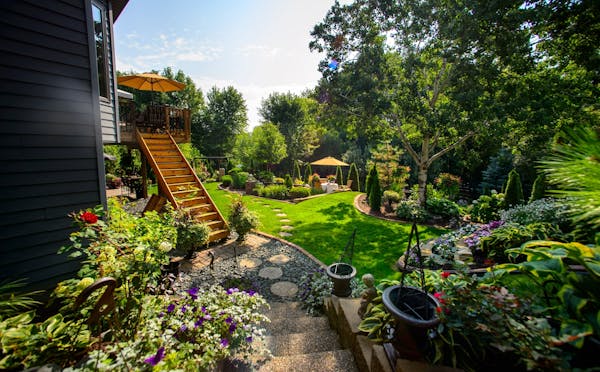Spring is such a tease in Minnesota. We have snow one day, 70 degrees the next. What's a gardener who hungers for flowers to do?
Plant pansies.
They're tough, reliable flowers for spring, holding their blooms even when temperatures dip into the mid-20s. They can even survive our winters, if they're mulched and covered with snow.
While pansies are the superstar pot plant for a Minnesota spring, other cold-tolerant plants can be seeded early in the garden.
Calendula, bachelor's buttons, alyssum and sweet peas are among the plants that will spring up from seed even in chilly soil. Snapdragons, ornamental kale, stocks and dianthus tolerate cold soil when planted as seedlings.
Some garden centers sell violas, the tough plants that pansies are descended from, as pot plants in the spring. They lack pansies' wide color range but are a nice alternative for gardeners who find the increasingly big, top-heavy flowers of pansies a bit ungainly.
Recently I saw some interesting pansy alternatives at a garden center: nemesia and diascia, hardy annuals that are more commonly seen in cool-summer places like Seattle.
Nemesia has small flowers that look like snapdragons and come in colors that span the rainbow. Although plant websites advise that nemesia not be planted outside until all danger of frost has passed, the tags on these plants said they're OK down to 30 degrees.
Diascia, also known as twinspur, has little flowers that resemble orchids and comes in white and shades of pink and coral. Some varieties can survive a frost.
(Minnesota master gardeners have compiled a complete list of cold-tolerant annuals at http://tinyurl.com/npsnn4g.)
Favored for a reason
But it's pansies that have the flashy color Minnesotans long for at this time of year. There's something happy and uplifting about plants that look like they have a face in their flower. And pansies are so easy to grow that they're a snap for beginners.
Pansies are descendants of Johnny-jump-ups, the humble violas that still freely populate our gardens. Shakespeare mentioned pansies — the name comes from "pensee," French for "thought."
According to the seed company Burpee, Charles Darwin took an interest in pansies as hybrids proliferated in England and flowers grew bigger and colors multiplied.
Today's pansies have among the widest and wildest flower colors of any plants — from yellow, blue, orange, pink and maroon to a dark purple that approaches black. Some eye-catching varieties have multiple colors on the petals and frilly or striped flowers. And, my, how those petals have grown. Flowers on some plants are nearly 3 inches across.
While it's possible to start pansies from seed, they're slow to mature. It's easier to buy plants. Pansies do their best in sun and fertile soil. Don't let them dry out, or they'll stop flowering and go to seed. You know you've gone overboard with the water if leaves start to yellow. Always plant pansies in pots that have drainage holes so the roots don't rot.
Like all annuals, deadheading — removing flowers as they fade — will ensure that pansies keep flowering.
Outside of rotting in too-wet soil, pansies tend to be free of pest problems and are easy to grow. But even breeders who have worked to perfect the plants haven't been able to triumph over pansies' archenemy: hot weather.
Pansies, nemesia and diascia all stop flowering in summer heat. Pots full of pansies will become a mass of green leaves in July, so many gardeners toss the plants in favor of heat-tolerant annuals like marigolds, petunias and geraniums. But if you want to hang onto the plants — and you've faithfully deadheaded during the spring — your pansies may bloom again in the fall.
As temperatures drop in October, faithful pansies won't be the only annuals that can carry a display into cold weather. Snapdragons, calendula, alyssum and other annuals that can take cool weather and that have been deadheaded during the summer may carry on a show right up until freeze.
Mary Jane Smetanka is a master gardener and a Minneapolis-based freelance writer.

Minnesota Sports Hall of Fame: A class-by-class list of all members

This retired journalist changed professional wrestling from Mankato

